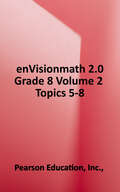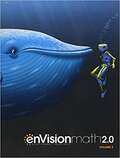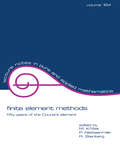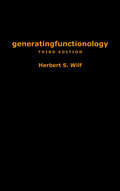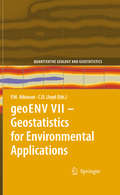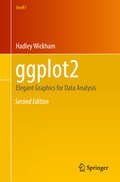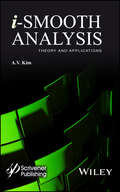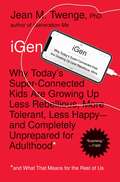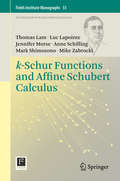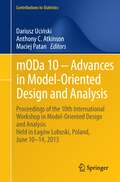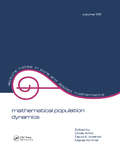- Table View
- List View
enVisionmath 2.0 [Grade 2], Volume 1, Topics 1-8
by Randall I. Charles Jennifer Bay-Williams Robert Q. Berry IIINIMAC-sourced textbook
enVisionmath 2.0 [Grade 3], Volume 1, Topics 1-7
by Randall I. Charles III Jennifer Bay-Williams Robert Q. BerryNIMAC-sourced textbook
enVisionmath 2.0 [Grade 3], Volume 2, Topics 8-16
by Randall I. Charles III Jennifer Bay-Williams Robert Q. BerryNIMAC-sourced textbook
enVisionmath 2.0 [Grade 4], Volume 2, Topics 8-16
by Randall I. Charles Jennifer Bay-Williams Robert Q. Berry IIINIMAC-sourced textbook
enVisionmath 2.0 [Grade 5], Volume 1, Topics 1-7
by Randall I. Charles III Jennifer Bay-Williams Robert Q. BerryNIMAC-sourced textbook
enVisionmath 2.0 [Grade 5], Volume 2, Topics 8-16
by Randall I. Charles III Jennifer Bay-Williams Robert Q. BerryNIMAC-sourced textbook
enVisionmath 2.0 [Grade 6], Volume 2, Topics 9-16
by Randall I. Charles Jennifer Bay-Williams Robert Q. Berry IiiNIMAC-sourced textbook
enVisionmath 2.0 [Grade K], Volume 1, Topics 1-8
by Randall I. Charles Jennifer Bay-Williams Robert Q. Berry IIIenVisionmath 2.0, [Grade 6], Volume 1, Topics 1-4
by Robert Q. Berry Eric Milou Zachary Champagne IIINIMAC-sourced textbook
enVisionmath 2.0, [Grade 6], Volume 2, Topics 5-8
by Zachary Champagne Eric Milou Robert Q. Berry IIINIMAC-sourced textbook
enVisionmath 2.0, [Grade 8], Volume 1, Topics 1-4
by III Robert Q. Berry Zachary Champagne Eric MilouNIMAC-sourced textbook
enVisionmath 2.0, [Grade 8], Volume 2, Topics 5-8
by III Robert Q. Berry Zachary Champagne Eric MilouNIMAC-sourced textbook
enVisionmath®2.0: Topics 5-8
by Randall I. Charles Francis Skip Fennell Jane F. Schielack Robert Q. Berry Zachary Champagne Eric Milou Jonathan A. WrayThis book covers the topics: 1. Use Positive Rational Numbers, 2. Integers and Rational Numbers, 3. Numeric and Algebraic Expressions, 4. Represent and Solve Equations and Inequalities, 5. Understand and Use Ratio and Rate, 6. Understand and Use Percent, 7. Solve Area, Surface Area, and Volume Problems, 8. Display, Describe, and Summarize Data. Key: Numbers and Computation, Algebra and Functions, Proportionality, Geometry, Data Analysis and Probability
envisionMATH® 2.0 Topics 9-16: Volume 2
by Scott Foresman - Addison WesleyDaily Problem-based Interactive Learning followed by Visual Learning strategies deepen conceptual understanding by making meaningful connections for students and delivering strong, sequential visual/verbal connections through the Visual Learning Bridge in every lesson. Ongoing Diagnosis and Intervention and daily Data-Driven Differentiation ensure that enVisionMATH gives every student the opportunity to succeed.
finite element methods: fifty years of the Courant element (Lecture Notes in Pure and Applied Mathematics)
by P. Neittaanmäki M. Křížek R. StenbergThese proceedings originated from a conference commemorating the 50th anniversary of the publication of Richard Courant's seminal paper, Variational Methods for Problems of Equilibrium and Vibration. These papers address fundamental questions in numerical analysis and the special problems that occur in applying the finite element method to various
generatingfunctionology: Third Edition
by Herbert S. WilfGenerating functions, one of the most important tools in enumerative combinatorics, are a bridge between discrete mathematics and continuous analysis. Generating functions have numerous applications in mathematics, especially in - Combinatorics - Probability Theory - Statistics - Theory of Markov Chains - Number Theory One of the most important and relevant recent applications of combinatorics lies in the development of Internet search engines whose incredible capabilities dazzle even the mathematically trained user.
geoENV VII – Geostatistics for Environmental Applications
by C. D. Lloyd Peter M. AtkinsonThis volume brings together selected contributions from geoENV 2008, the 7th International Conference on Geostatistics for Environmental Applications, held in Southampton, UK, in September 2008. This book presents the state-of-the-art in geostatistics for the environmental sciences. It includes a wide range of methodological advances and applications. It offers insight and guidance for researchers, professionals, graduate students and others seeking information on the latest perspectives in the field. The rich body of applications will enable those new to geostatistics to assess the utility of the methods for their own applications. The book includes 35 chapters on topics as diverse as methodological developments, applications in the soil sciences, climatology, pollution, health, wildlife mapping, fisheries and remote sensing, amongst other areas. With its focus on environmental applications of geostatistics, rather than the more traditional geostatistical remit of mining and petroleum exploration, this book is part of a series that presents an invaluable resource. This book will be a first port of call for those who wish to apply geostatistical methods in the environmental sciences.
ggplot2
by Hadley WickhamThis new edition to the classic book by ggplot2 creator Hadley Wickham highlights compatibility with knitr and RStudio. ggplot2 is a data visualization package for R that helps users create data graphics, including those that are multi-layered, with ease. With ggplot2, it's easy to: produce handsome, publication-quality plots with automatic legends created from the plot specification superimpose multiple layers (points, lines, maps, tiles, box plots) from different data sources with automatically adjusted common scales add customizable smoothers that use powerful modeling capabilities of R, such as loess, linear models, generalized additive models, and robust regression save any ggplot2 plot (or part thereof) for later modification or reuse create custom themes that capture in-house or journal style requirements and that can easily be applied to multiple plots approach a graph from a visual perspective, thinking about how each component of the data is represented on the final plot This book will be useful to everyone who has struggled with displaying data in an informative and attractive way. Some basic knowledge of R is necessary (e. g. , importing data into R). ggplot2 is a mini-language specifically tailored for producing graphics, and you'll learn everything you need in the book. After reading this book you'll be able to produce graphics customized precisely for your problems, and you'll find it easy to get graphics out of your head and on to the screen or page.
i-Smooth Analysis: Theory and Applications
by A. V. KimThe edition introduces a new class of invariant derivatives and shows their relationships with other derivatives, such as the Sobolev generalized derivative and the generalized derivative of the distribution theory. This is a new direction in mathematics. i-Smooth analysis is the branch of functional analysis that considers the theory and applications of the invariant derivatives of functions and functionals. The important direction of i-smooth analysis is the investigation of the relation of invariant derivatives with the Sobolev generalized derivative and the generalized derivative of distribution theory. Until now, i-smooth analysis has been developed mainly to apply to the theory of functional differential equations, and the goal of this book is to present i-smooth analysis as a branch of functional analysis. The notion of the invariant derivative (i-derivative) of nonlinear functionals has been introduced in mathematics, and this in turn developed the corresponding i-smooth calculus of functionals and showed that for linear continuous functionals the invariant derivative coincides with the generalized derivative of the distribution theory. This book intends to introduce this theory to the general mathematics, engineering, and physicist communities.
iGen: Why Today's Super-Connected Kids Are Growing Up Less Rebellious, More Tolerant, Less Happy--and Completely Unprepared for Adulthood--and What That Means for the Rest of Us
by Jean M. Twenge&“We&’ve all been desperate to learn what heavy use of social media does to adolescents. Now, thanks to Twenge&’s careful analysis, we know: It is making them lonely, anxious, and fragile—especially our girls. If you are a parent, teacher, or employer, you must read this fascinating book.&”—Jonathan Haidt, author of The Anxious Generation Born after 1995, they grew up with cell phones, had an Instagram page before high school, and cannot remember a time before the Internet. They are iGen. Now, here is crucial reading to understand how these children, teens, and young adults are vastly different from their millennial predecessors, and from any other generation.With generational divides wider than ever, parents, educators, and employers have an urgent need to understand today&’s rising generation of teens and young adults. Born in the mid-1990s up to the mid-2000s, iGen is the first generation to spend their entire adolescence in the age of the smartphone. With social media and texting replacing other activities, iGen spends less time with their friends in person—perhaps contributing to their unprecedented levels of anxiety, depression, and loneliness. But technology is not the only thing that makes iGen distinct from every generation before them; they are also different in how they spend their time, how they behave, and in their attitudes toward religion, sexuality, and politics. They socialize in completely new ways, reject once sacred social taboos, and want different things from their lives and careers. More than previous generations, they are obsessed with safety, focused on tolerance, and have no patience for inequality. As this new group of young people grows into adulthood, we all need to understand them: friends and family need to look out for them; businesses must figure out how to recruit them and sell to them; colleges and universities must know how to educate and guide them. And members of iGen also need to understand themselves as they communicate with their elders and explain their views to their older peers. Because where iGen goes, so goes our nation—and the world. *As seen in Time, USA TODAY, The Atlantic, The Wall Street Journal, and on CBS This Morning, BBC, PBS, CNN, and NPR*
k-Schur Functions and Affine Schubert Calculus
by Thomas Lam Luc Lapointe Jennifer Morse Anne Schilling Mark Shimozono Mike ZabrockiThis book gives an introduction to the very active field of combinatorics of affine Schubert calculus, explains the current state of the art, and states the current open problems. Affine Schubert calculus lies at the crossroads of combinatorics, geometry, and representation theory. Its modern development is motivated by two seemingly unrelated directions. One is the introduction of k-Schur functions in the study of Macdonald polynomial positivity, a mostly combinatorial branch of symmetric function theory. The other direction is the study of the Schubert bases of the (co)homology of the affine Grassmannian, an algebro-topological formulation of a problem in enumerative geometry. This is the first introductory text on this subject. It contains many examples in Sage, a free open source general purpose mathematical software system, to entice the reader to investigate the open problems. This book is written for advanced undergraduate and graduate students, as well as researchers, who want to become familiar with this fascinating new field.
mODa 10 – Advances in Model-Oriented Design and Analysis
by Maciej Patan Dariusz Ucinski Anthony C. AtkinsonThis book collects the proceedings of the 10th Workshop on Model-Oriented Design and Analysis (mODa). A model-oriented view on the design of experiments, which is the unifying theme of all mODa meetings, assumes some knowledge of the form of the data-generating process and naturally leads to the so-called optimum experimental design. Its theory and practice have since become important in many scientific and technological fields, ranging from optimal designs for dynamic models in pharmacological research, to designs for industrial experimentation, to designs for simulation experiments in environmental risk management, to name but a few. The methodology has become even more important in recent years because of the increased speed of scientific developments, the complexity of the systems currently under investigation and the mounting pressure on businesses, industries and scientific researchers to reduce product and process development times. This increased competition requires ever increasing efficiency in experimentation, thus necessitating new statistical designs. This book presents a rich collection of carefully selected contributions ranging from statistical methodology to emerging applications. It primarily aims to provide an overview of recent advances and challenges in the field, especially in the context of new formulations, methods and state-of-the-art algorithms. The topics included in this volume will be of interest to all scientists and engineers and statisticians who conduct experiments.
mathematical population dynamics: Proceedings of the Second International Conference
by Ovide ArinoThis book is an outcome of the Second International Conference on Mathematical Population Dynamics. It is intended for mathematicians, statisticians, biologists, and medical researchers who are interested in recent advances in analyzing changes in populations of genes, cells, and tumors.


